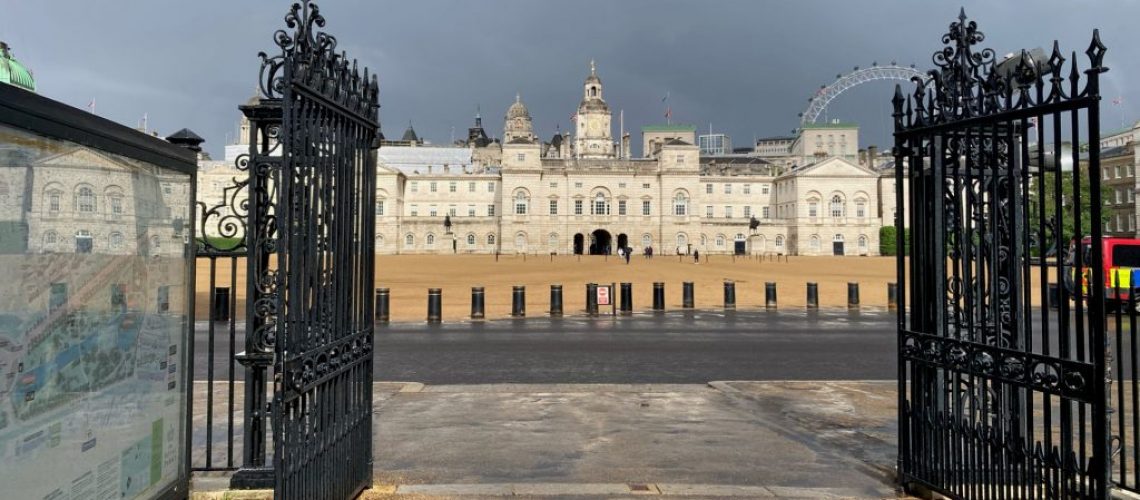Dugald Sandeman once worked in an office with a view – one of Horse Guards Parade where, against the backdrop of the elegant and graceful Guard House, the annual ceremony to mark the sovereign’s birthday takes place every June
The view East from the Blue Bridge in St James’s Park has been described as ‘the most astonishing and romantic roofscape in London’. In the left foreground of this scene stands the Guard House in Horse Guards Parade. Its delightful roof line forms part of the picture, which looks so much like the view of a fairy kingdom. The whiteness of the facade emphasises the impression.
When introducing visitors to the Whitehall Palace I say how much I would like to tell them that this was the gatehouse to the palace. Sadly, that would be fake history, as the current building was designed by William Kent in the 1740s and built over 50 years after most of the palace had been burnt to the ground in 1698. But it is nevertheless clear that the new building echoed its predecessor, as a very detailed drawing made by Leonard Knyff of the palace in 1695 and Canaletto’s painting of 1749 of Old Horse Guards both show.
It is a Palladian building of grace, elegance and proportion that can now be properly enjoyed. Until the mid-1990s, Horse Guards Parade was routinely used as a car park during the week, mainly for civil servants working in Whitehall buildings. One of the side-effects of the need for ever tighter security was to ban its use as a car park, in spite of the self-interested indignation of those affected. What an improvement: Horse Guards Parade could at last be enjoyed as a wonderful open space.
At the time I was lucky to work in Number 70 Whitehall, which looked out on Horse Guards. I worked in the office of the then Leader of the House of Commons – Tony Newton, as self-effacing and modest a government minister as you could meet. One of the joys of this office in the summer was the morning practices for the Trooping of the Colour (below right) and Beating the Retreat – with the music of massed bands making the daily grind of government much easier to bear.
On one occasion, the Romanian Ambassador was due to meet the minister, and my colleague who was leading him up the stairs told him we had laid on some music for him. He was thrilled and beamed throughout the meeting, thanking the minister profusely at the end for putting on such a wonderful performance for him. Newton was a bit bemused, but laughed heartily when the story was explained.
In 2012, the buildings and Horse Guards Parade witnessed the Olympics beach volleyball contest (below left). It was a delightful speculation to wonder what Henry VIII would have made of the event in his own playground – and, indeed, whether he would have needed clear instructions about respecting the rights of the female competitors.
Perhaps that is what is so attractive about this lovely building and its space. Nearly 400 years after the building of the new Guard House, it still has a daily function in the life of London and the British monarchy. Whether it is the daily changing of the guard, Trooping the Colour or acting as the saluting point for a state visit, it is a living part of us.

RIGHT: Every June, it is the arena for the Trooping the Colour 2013 (right) ceremony (photo: Corporal Paul Shaw ©Crown Copyright 2013)
Main image: The view of Horse Guards Parade from the gates of St James’s Park (photo: Janet Perham)

